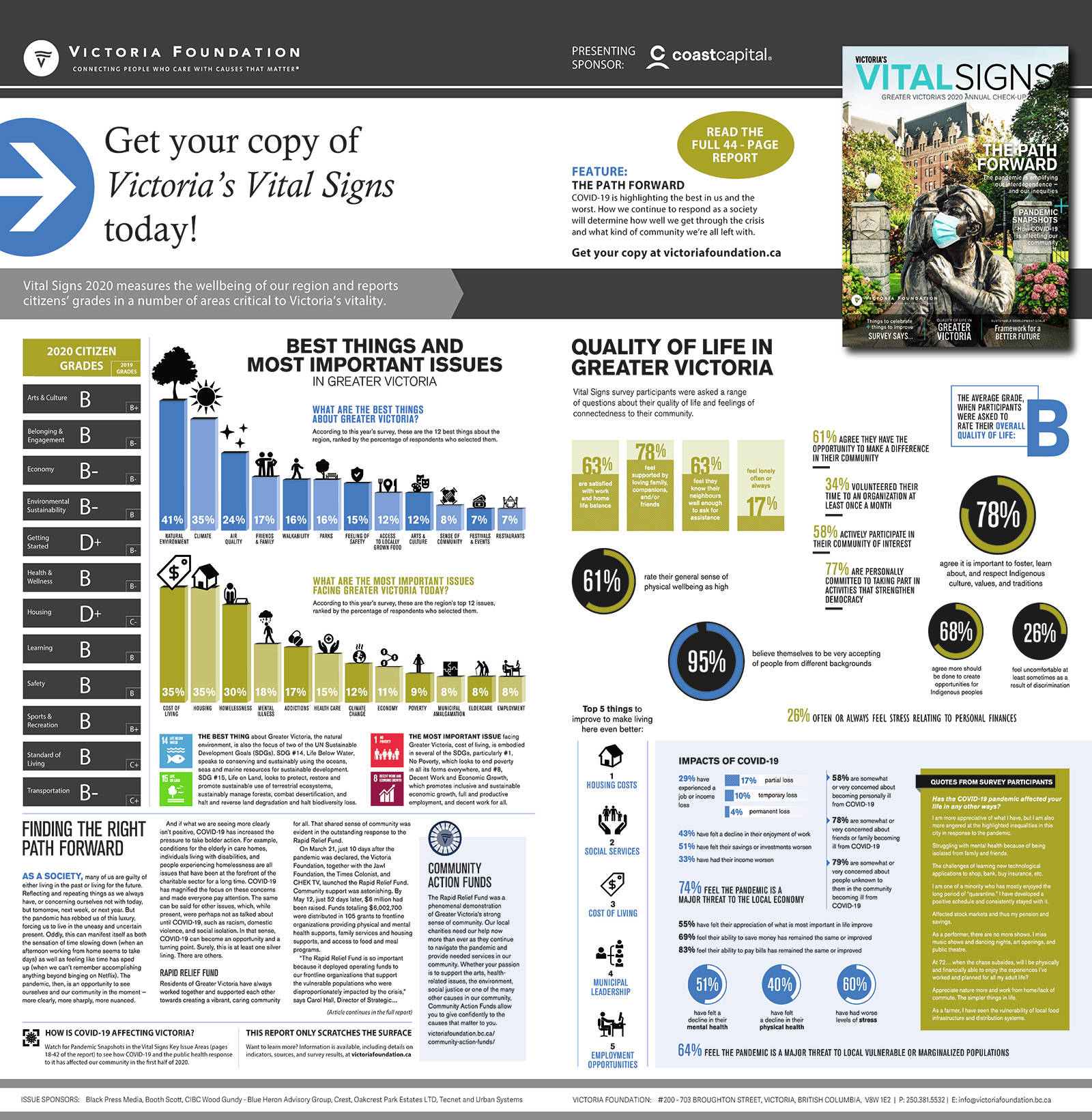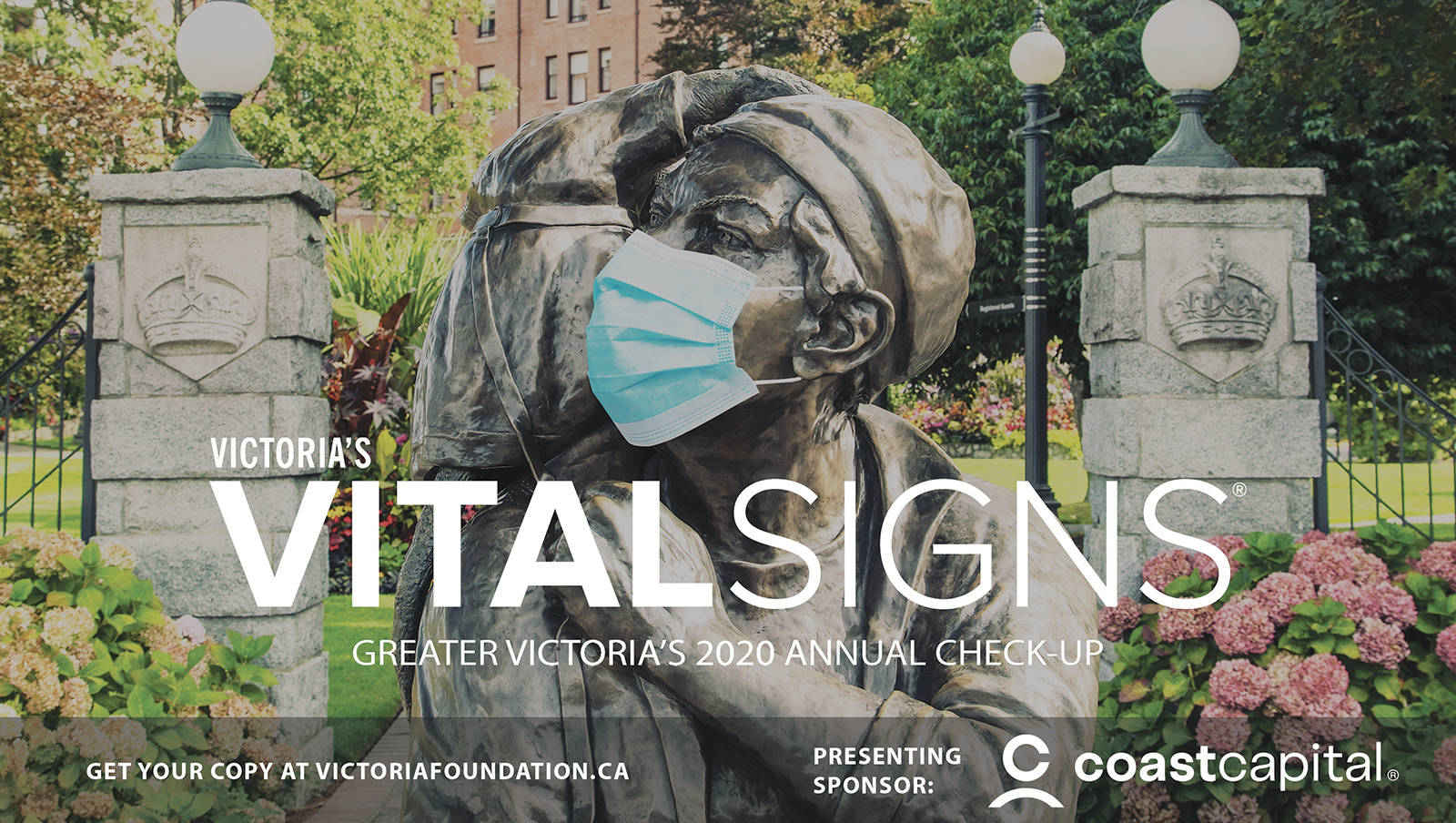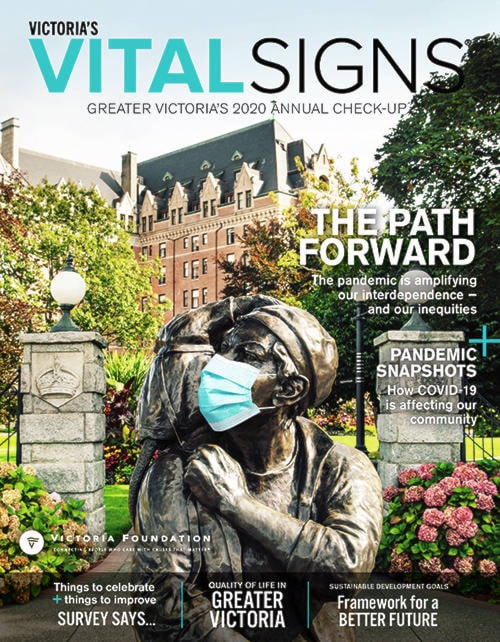Here at home and around the world, 2020 has been a year unlike any other, but what has its impact been in Greater Victoria?
Significant, according to the Victoria Foundation’s 2020 Victoria’s Vital Signs report, released earlier this month.
Responses to the annual community check-up indicated that 51 per cent of residents have felt a decline in their mental health due to the COVID-19 pandemic, and 29 per cent have experienced a job or income loss. Add to that the impacts of the worldwide movement for racial justice, and the immense disruptions in our daily lives, and changes have emerged in how residents perceive our region.
“While Greater Victoria has been fortunate to so far avoid the most significant impacts of the pandemic, it’s clear the events and upheaval they’ve brought have had a major impact on people’s lives – both economically and with their mental health and wellbeing,” says Victoria Foundation CEO Sandra Richardson. “We encourage residents, local governments, organizations and donors to review this year’s report as we look at how best to support the community today and in the months to follow.”
15th edition of Victoria’s Vital Signs
This year marks the 15th edition of Victoria’s Vital Signs, possible thanks to the support of presenting sponsor Coast Capital Savings.
Nearly 1,800 Capital Region residents completed the Vital Signs survey, whose results are combined with significant data and statistics to create a snapshot of how our region is faring both overall and in 12 key issue areas, such as health and wellness, transportation and the environment. This year’s survey also included specific COVID-19-related questions and the report itself features Pandemic Snapshots, offering evidence-based insights on the impact of COVID-19 on our region.
The magazine-style final report also explores the continuing community response to COVID, how the United Nations Sustainable Development Goals relate to each issue area, and more.
Here are some of this year’s significant findings:
- Beyond a decline in mental health, 40 per cent of respondents have felt a decline in their physical health.
- 34 per cent of jobs for residents under 25 years old disappeared between February and May of this year, with young women experiencing a 41 per cent drop in employment, compared to 27 per cent for their male peers.
- Overall, 74 per cent of respondents feel the pandemic is a major threat to the local economy.
- Overall quality of life, as graded by survey respondents, has dropped from 2019 from a B+ to a B, and of the report’s 12 key issue areas, nine have seen a grade change from 2019. The most drastic of these falls under “Getting Started,” which looks at how our community fares in offering opportunities to newcomers and young people. From 2019’s B- grade, this year it fell to D+, tying with Housing as the lowest-graded area.
- Asked to identify the most important issues facing our region, survey respondents picked Homelessness as the No. 3 priority, behind Cost of Living and Housing. In 2019 Homelessness was identified as only the eighth most important issue.
- The three best things about Greater Victoria remain the same from 2019, with Natural Environment, Climate and Air Quality taking top spots.
Victoria’s Vital Signs report is available at various locations throughout the community, or view it online at victoriafoundation.ca.
***
Established in 1936, the Victoria Foundation is Canada’s second oldest community foundation, managing charitable gifts from donors whose generosity allows them to create permanent, income-earning funds. To date, the foundation has invested more than $225 million in people, projects and non-profit organizations that strengthen communities locally and throughout Canada.


